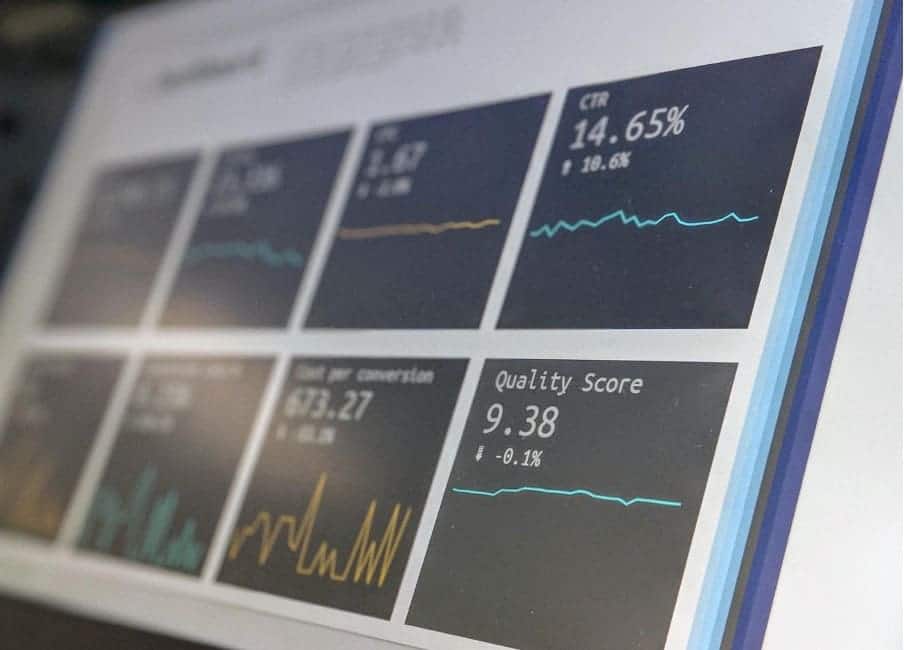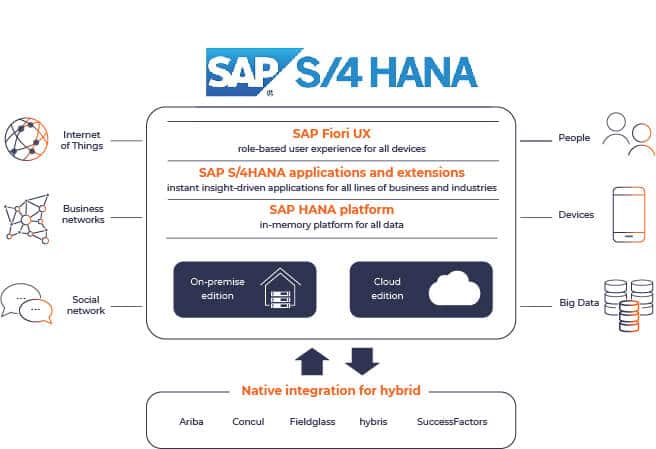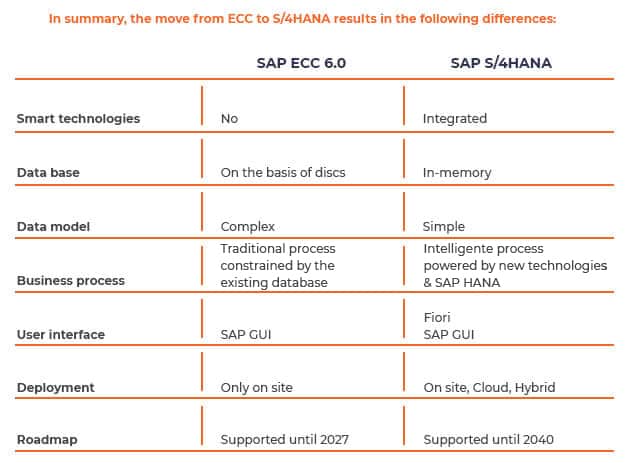SAP S/4HANA: how do you choose between a cloud, on-premise or hybrid deployment?

SAP Universal Journal – One Single Source of Truth
Minh-Thu Dotu
The Cloud compared to renting an apartment
Features of Cloud compared to On-Premise
1. License
The licensing model is similar to real estate management.
As an SAP customer, if you buy the On-Premise software, you are buying a product. You own the software as an asset; you are in a CAPEX scheme.
If you purchase the Cloud version, you are buying a service and do not own the software. You are in a subscription license model and pay an annual fee for the software as a service (SaaS), including maintenance and upgrades. This is called OPEX.
2. Infrastructure
In the case of an On-Premise system, your IT team is responsible for the infrastructure. They manage the servers, the network, the storage, the operating systems. They ensure security and disaster risk. They have to plan the purchase, installation, testing, upgrades and security of all elements.
With a Software as a Service, all of this is done by SAP.
3. Reliability and security
The Cloud service provider offers the hardware and knowledge to apply the latest security measures. The Cloud significantly reduces the risk of implementing a new data system and helps companies, especially smaller ones, focus on growth.
Some companies are reluctant to use the cloud for a variety of reasons. They have questions about ownership, leakage or control of their data. They have doubts about the level of security guaranteed. Yet only the largest companies can afford to hire top security specialists.
A provider like SAP offers maximum security due to economies of scale.
4. Flexibility
The Cloud increases flexibility. It means dependence on the Internet but independence from the office. Wherever they are, your customers and staff have access to your data centers, with access limited in function of your criteria.
5. Upgrades
With any On-Premise version, upgrades are available annually. You schedule them at your own pace so you can better manage their impact on your business processes and organization. The logical downside of a slower upgrade is that you don’t get the latest innovations.
In thet Cloud version, updates are quarterly or bi-annual and either automatic or accompanied by SAP. This formula allows you to reap the benefits of its innovations immediately.
6. Customizations
The On-Premise solution and the Private Cloud Edition solution allow for a wide range of customizations, while the Public Cloud Edition solution offers a reduced set of functionalities. It is a template-based solution. The customer relies on the Best Practices of the line of business (LoB).
Main features of the On-Premise and Cloud Editions
Licence model
SAP S/4HANA On-Premise Edition
- Traditional license
- Buy a product
- License purchase fee + annual maintenance fee.
- You are the owner of the license
SAP S/4HANA Cloud Edition
- Subscription license
- Buy a service
- Annual fee for the license + SaaS + maintenance + upgrades.
Investments
SAP S/4HANA On-Premise Edition
- Infrastructure, software, hardware.
- Storage / operating system.
SAP S/4HANA Cloud Edition
No infrastructure, software or hardware.
Infrastructure & Maintenance
SAP S/4HANA On-Premise Edition
Your It department is in charge of the maintenance.
SAP S/4HANA Cloud Edition
Outsourced to SAP
IT security
SAP S/4HANA On-Premise Edition
Security management is of your own responsibility.
SAP S/4HANA Cloud Edition
Security management is supported by SAP.
Updates
SAP S/4HANA On-Premise Edition
Defined and supported by you
SAP S/4HANA Cloud Edition
Defined and supported by SAP
Customization
SAP S/4HANA On-Premise Edition
High adaptability level.
SAP S/4HANA Cloud Edition
- Public Cloud: Configuration predefined by the Best Practices, with limited adaptability
- Private Cloud: High adaptability level, nearly like On-Premise
Scope
SAP S/4HANA On-Premise Edition
Unlimited variety of add-ons
SAP S/4HANA Cloud Edition
- Public Cloud: no add-ons
- Private Cloud: only add-ons certified by SAP
Advantages
SAP S/4HANA On-Premise Edition
Maximum control and autonomy
SAP S/4HANA Cloud Edition
Easy and fast
Some companies choose to remain On-Premise for the production entities and to regroup the financial and commercial entities in the Cloud. In this case, they apply the SAP S/4HANA hybrid model.
SAP S/4HANA editions
1. SAP S/4HANA On-Premise
SAP S/4HANA On-Premise Edition works identically to previous versions of SAP ECC. There is nothing fundamentally new about how to implement it.
2. SAP S/4HANA Cloud Public
SAP S/4HANA Public Cloud Edition, known previously as Multi Tenant Edition (MTE) or Essentials Edition (ES) is a Software as a Service (SaaS) offered by SAP. No non-SAP hosting is allowed.
With SAP S/4HANA Public Cloud Edition, the customer relies on industries Best Practices. The deployment is a Greenfield.
3. SAP S/4HANA Private Cloud
This table provides additional information about the features of the different options:

ON-PREMISE | PRIVATE CLOUD | PUBLIC CLOUD |
On-Premise on customer's infrastructure | Dedicated system landscape on SAP Cloud infrastructure, AWS or Azure | SAP's Public Cloud infrastructure |
PaaS | SaaS | |
Traditional/perpetual licensing | Subscription license | Subscription license |
Governance by SAP customer | Governance by SAP & SAP customer | Governance by SAP |
Highly customizable | Customizable | Standardized |
Plan your own updates | Biannual (theoretically) Schedule your own update Mandatory every 2 years | Quaterly update |
Greenfield, Brownfield or Hybrid | Greenfield, Brownfield or Hybrid | Greenfield deployment |
Highest total cost of ownership | Low TCO | Lowest TCO |
Can be reconfigured | Can be reconfigured | Cannot be reconfigured |
SAP code and all other modifications are allowed | Does not allow the standard SAP code but allows all other modifications | Does not allow the creation of specific programs in ABAP and does not allow to |
Allows extensions ; Allows all add-ons ; Can add code | Allows only add-ons certified by SAP on the Cloud ; Can add code | Does not allow extensions ; Impossible to add code |
Many large enterprises are turning to the Private Cloud Edition because of the advantages of monitoring, flexibility, customization and security it offers. The major argument in favor of the Private Cloud Edition is the ability to retain the existing configuration and transaction data with a selective data transition.
However, the combination of SAP S/4HANA On-Premise and Cloud could be a preferred option for large enterprises due to their organizational structure. It also allows to phase the migration and to benefit more quickly from the advantages of S/4HANA.
How can we help you?
- S4IC is the commercial name of High-SEA company
- Open from Monday to Friday - 9am to 6pm
- Avenue Voltaire 3, 1300 Wavre
- +32 (0)2 880 91 10
- info@s4ic.com
- VAT : 0806 380 893
Copyright S4IC – 2021






















